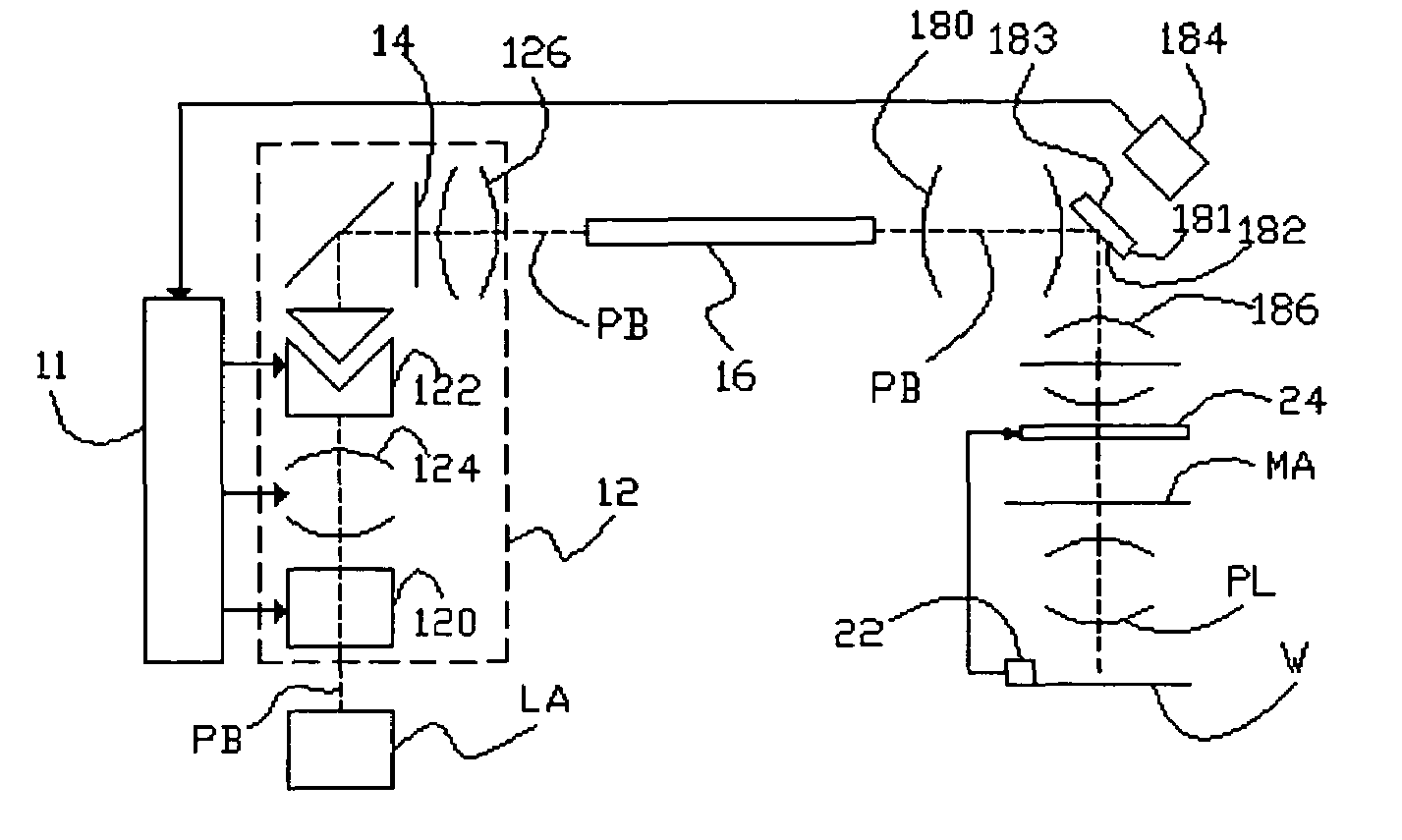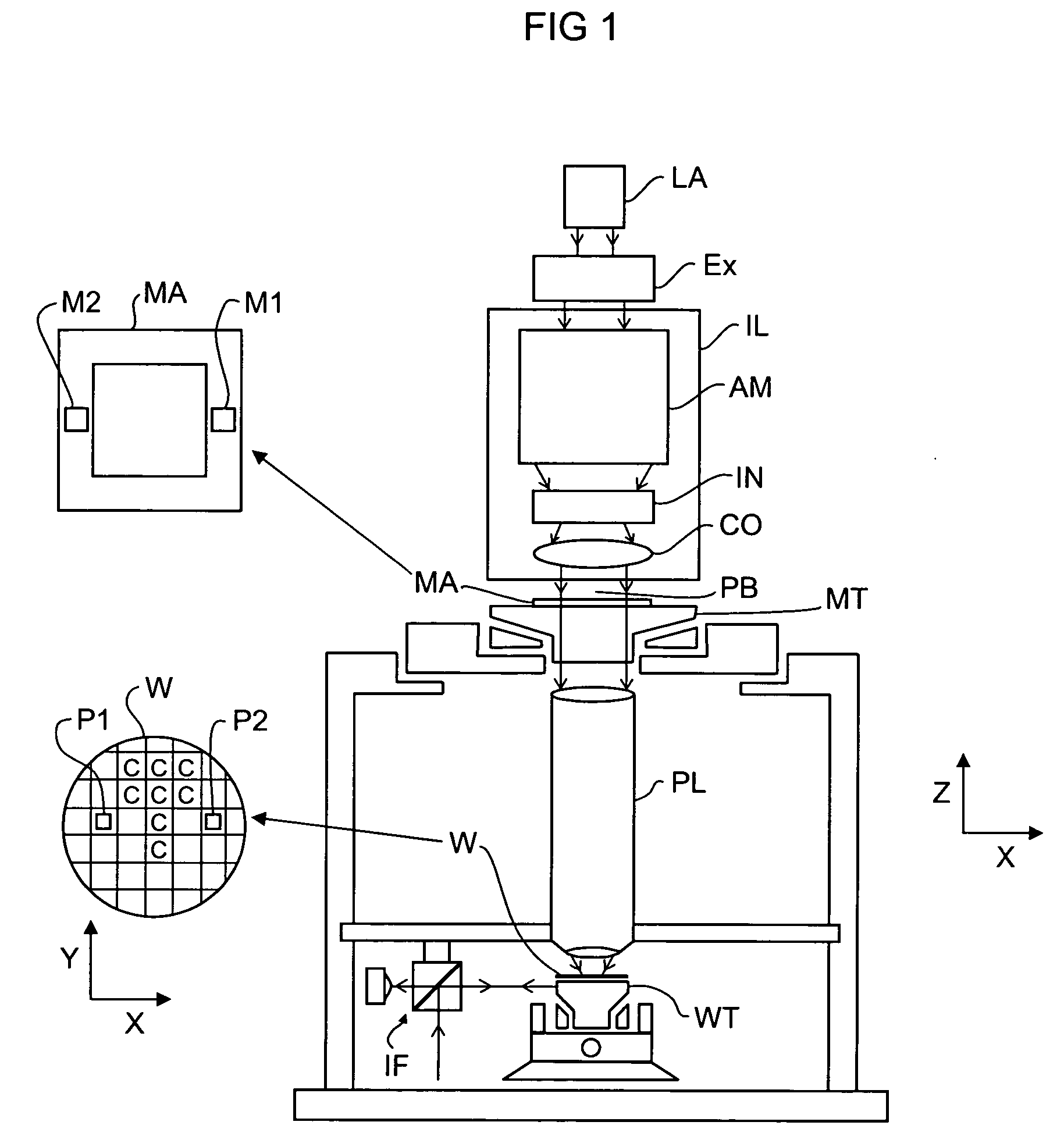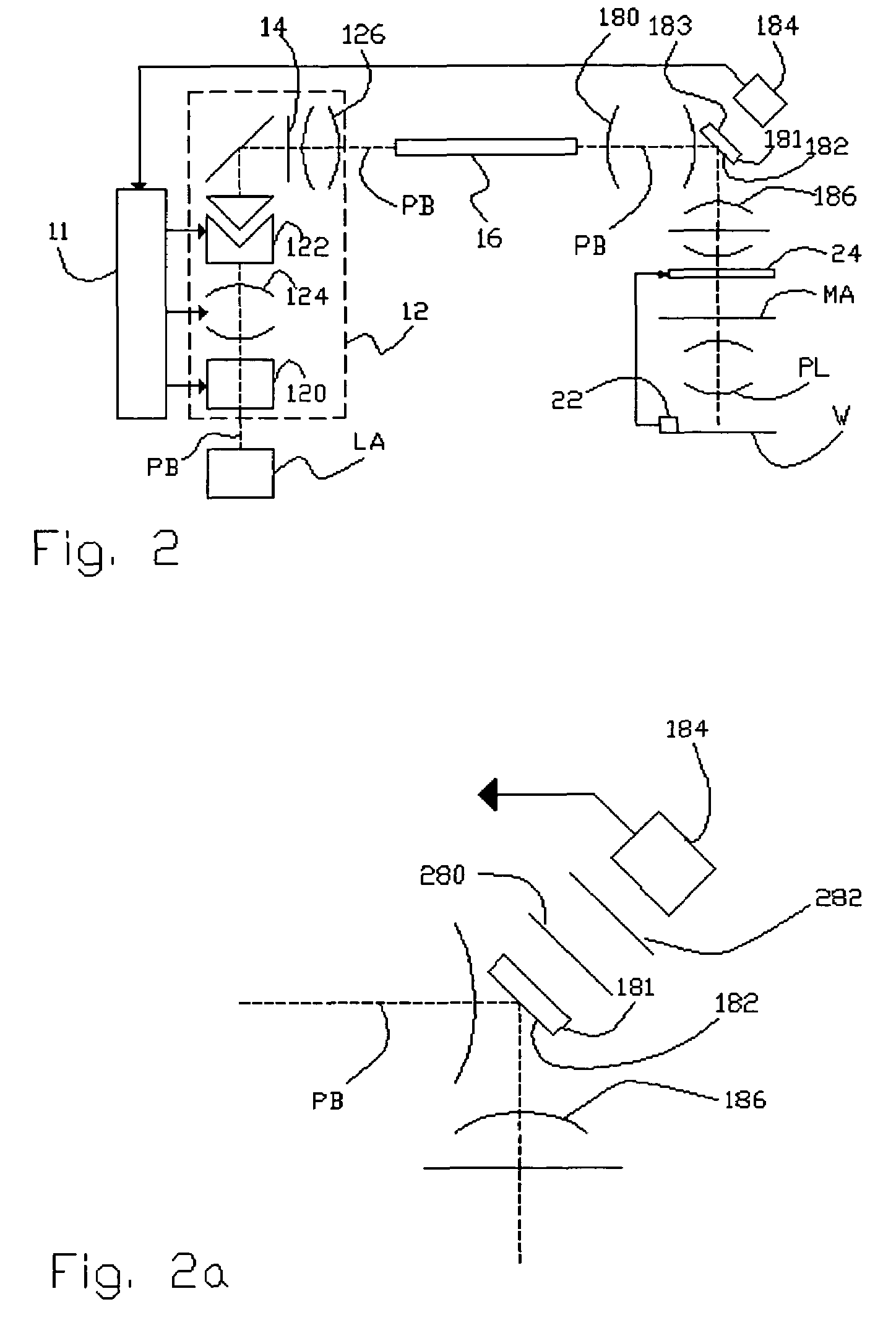Lithographic apparatus and device manufacturing method
a technology of lithographic apparatus and manufacturing method, applied in the field of lithographic apparatus, can solve the problems of complex illumination system, inconvenient contamination of importance, and achieve the effect of simple measurement of angular intensity distribution, simple illumination system, and simple manufacturing method
- Summary
- Abstract
- Description
- Claims
- Application Information
AI Technical Summary
Benefits of technology
Problems solved by technology
Method used
Image
Examples
embodiment 1
[0043]FIG. 1 schematically depicts a lithographic apparatus according to a particular embodiment of the invention. The apparatus comprises:
[0044]a radiation system Ex, IL, for supplying a projection beam PB of radiation (e.g., ultraviolet radiation). In this particular case, the radiation system also comprises a radiation source LA;
[0045]a first object table (mask table) MT provided with a mask holder for holding a mask MA (e.g., a reticle);
[0046]a second object table (substrate table) WT provided with a substrate holder for holding a substrate W (e.g., a resist-coated silicon wafer); and
[0047]a projection system (“lens”) PL (e.g., a refractive, reflective or catadioptric lens) for imaging an irradiated portion of the mask MA onto a target portion C (e.g., comprising one or more dies) of the substrate W.
[0048]As here depicted, the apparatus is of a transmissive type (i.e., has a transmissive mask). However, in general, it may also be of a reflective type, for example, with a reflect...
PUM
 Login to View More
Login to View More Abstract
Description
Claims
Application Information
 Login to View More
Login to View More - R&D
- Intellectual Property
- Life Sciences
- Materials
- Tech Scout
- Unparalleled Data Quality
- Higher Quality Content
- 60% Fewer Hallucinations
Browse by: Latest US Patents, China's latest patents, Technical Efficacy Thesaurus, Application Domain, Technology Topic, Popular Technical Reports.
© 2025 PatSnap. All rights reserved.Legal|Privacy policy|Modern Slavery Act Transparency Statement|Sitemap|About US| Contact US: help@patsnap.com



